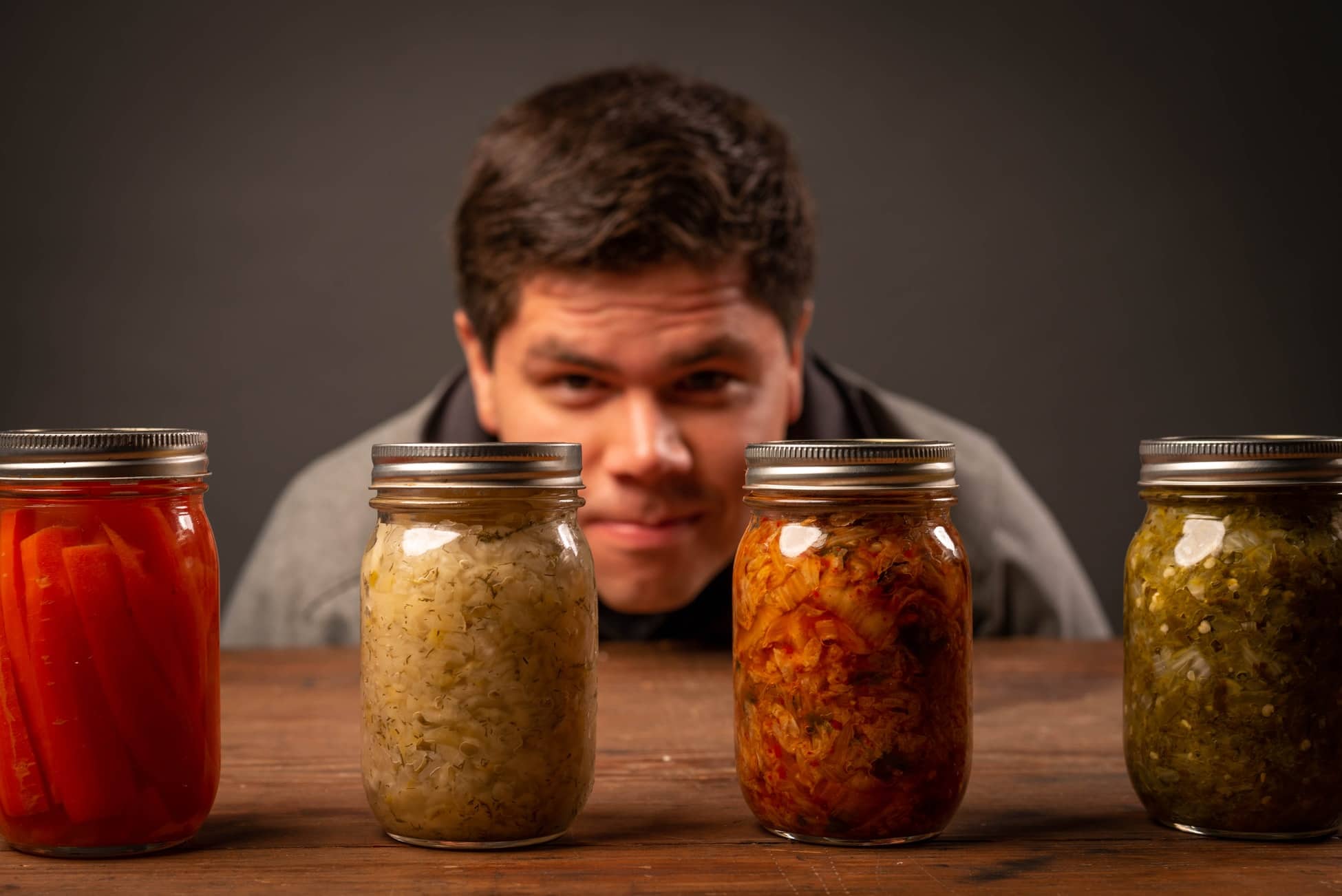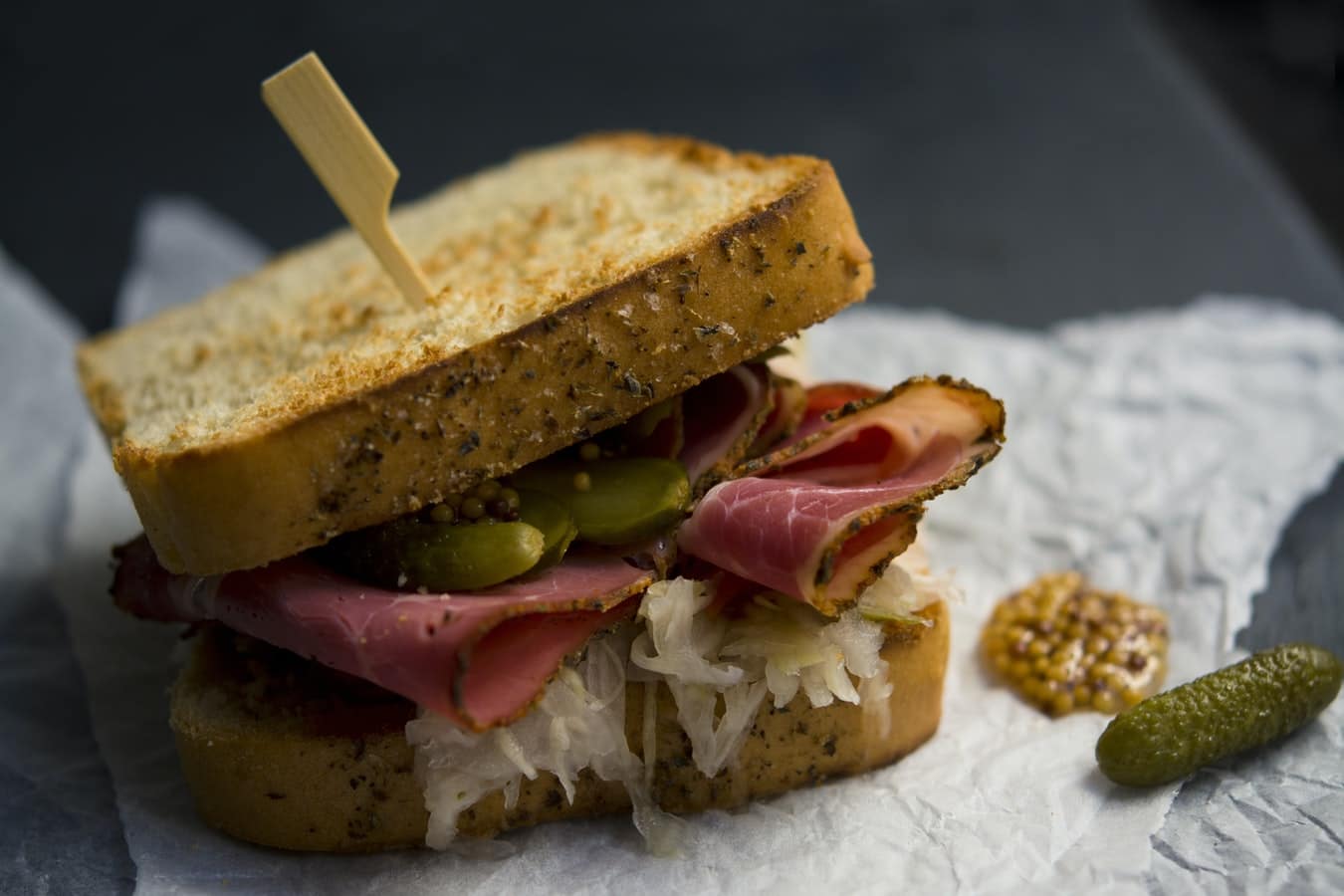A dish with the unpronounceable name “sauerkraut” is actually a fermented shredded cabbage. It is very popular worldwide today, but they say its origin dates back to ancient China.
Since sauerkraut is rather multipurpose food and can be eaten as it is or when added to other meals, people often ask whether it is possible to preserve it.
And today we will try to find the answer to the questions of “can you freeze sauerkraut?”
Meet Fermented Cabbage
As we already mentioned, sauerkraut is a shredded pickled cabbage. Usually, white sort of this veg is used for this dish which is widely popular in Ukraine, Russia, and Germany. Nevertheless, the legend says that this foodstuff first appeared in China several millenniums ago when local people first fermented cabbage in rice alcohol.
The modern basic recipe is rather simple and requires only cabbage and salt, sometimes, a bit of black pepper can be added to enhance the flavor.
However, after a while, people created another recipe similar to the initial one. The new foodstuff was more like a salad consisting of fermented cabbage, sweet pepper, and spices. This one, unlike the original dish, needs less time to pickle and has a slightly different taste.
Homemade Kraut Instruction
The procedure of kraut making is quite simple. You will only need a veggie, salt, and tanks.
The veggie must be shredded finely, layered with salt, and pickle for about twenty-one days under the proper conditions.
Since the procedure involves lactic acid fermentation, all sorts of healthy bacteria grow during it making kraut not only a delicious but also a beneficial foodstuff.
Would you like to give it a try and make some pickled cabbage yourself? It is extremely easy, you’ll see it!
- Prepare the veg, a jar, salt, clean cloth, a weight to press the shreds – and off we go!
- Sanitize everything starting from a knife and ending with your hands. The jar must also be sterilized. If we do not do it, bad bacteria will develop making the initially healthy foodstuff poisonous.
- Take the freshest cabbage you can find on the market. Like that, we can be sure that bacteria will flourish.
- Take away the outer leaves and toss them, shred the rest finely and thin.
- Place all the shredded pieces in a large bowl and sprinkle with one or two spoonfuls of salt.
- Massage the shredded veg until it becomes watery and soft. The second you notice that no more liquid comes out, stop.
- Now stuff the previously sterilized jar with the veggie shreds so that it is covered with liquid.
- Place the weight on top. As a weight, it is ok to use a clean stone or a small tank with something heavy. In any case, it must not get soaked.
- Protect the jar with the cloth prepared in advance, and fasten it with the stretchy band.
- Now it is time to keep an eye on the kraut! For the first twenty-four hours, remember to press the weight down every four hours. If you see that the content is not completely covered with liquid, it’s ok to add some salty water.
- Place the jar in a cool and dry spot (65 to 72 F will be perfect!) for at least three days, and a maximum of three weeks.
The trick here is that the more time kraut spends fermenting the tangier it will become.
- Right after the foodstuff reached the ideal point of pickling, cover it with a lid and refrigerate.
If everything was done right, expect your kraut to remain delicious and consumable for nearly six months.
This is the basic recipe, but some people prefer using an acetum and sugar solution to ferment the cabbage. It makes sense since both these components work as preservatives extending the lifespan of the side dish.
How long does it last at all?
[table id=60 /]
Can Sauerkraut Go Bad?
Any foodstuff spoils sooner or later, and sauerkraut is not an exception, unfortunately. Even though being quite long-lasting, this dish has certain restrictions regarding the way of keeping. When following them, we can significantly extend the lifespan of this sour and tasty food.
- Always keep it refrigerated
- Storing sauerkraut unchilled is prohibited since it leads to the development of harmful bacteria that will make the foodstuff hazardous for our wellbeing
- After each use, seal the jar tightly to prevent oxidation and further spoilage

But still, knowing the basic signs of spoilage is a must in order to spot the off product and discard it in time.
- if the pickled cabbage smells bad
- if its texture degrades
- if any weird changes of color are noticeable (e.g. discoloration)
- if greenish-blue specks appear on top of the content
toss it away without regret since the foodstuff went bad completely.
Can You Freeze Sauerkraut?

A question that bothers so many of us! And we are glad to say that yes, this side dish can be frozen! What is even better, the process won’t take you much time or effort.
- For preserving it, transfer the shredded pickled veg to the zip frost-resistant packet or to the frost-friendly tank.
- Leave a few inches of empty space since the liquid will expand when getting frozen.
- Remove as much air as you can, and seal the tank tightly.
If you feel like preserving small portions of kraut for further use, we suggest you go for an ice tray for that purpose. Simply leave the pickled veg in the frosting camera put in ice tray sections until it is solidified, and then transfer the solid cabbage cubes to any frost-resistant tank.
What About Defrosting?
We make crucial mistakes mostly when defrosting foods improperly.
To avoid the same problem with kraut, use one of the possible options.
- Thaw it in the refrigerator
- Unfreeze it by placing it in a microwave for ten to twenty seconds on high power. Repeat as many times as needed if the foodstuff is still hard.
- Defrost by placing on a countertop.
- If the kraut is about to be used in a dish being cooked right now, simply incorporate it directly into it.
And remember that, after defrosting in a microwave or on the counter, pickled cabbage must be consumed at once!
How to Make Use Of It
What a strange question, you might think! Just eat it! And this is what most of us usually do. We simply add kraut to some major dishes like meat or mashed potatoes or consume it as it is.
But did you know that this simple side dish has way more options for being used? We will skip the most simple and obvious variants to present only the unusual ways of cooking it.
- Add sauerkraut to the casserole with meatballs and barley
- Surprise your family members with hearty sauerkraut and sausage soup
- Need a quick meal? Them try out a ham, bean, and bacon soup with sauerkraut.
- Add it to the homemade hotdogs or stuff meaty pierogies with it.
- And finally, it can even be incorporated into the bakery! Beer and sauerkraut fudge cupcakes are something to try out!
Pros And Cons Of Frosting It

Since freezing influences the quality and the texture of food, people often get concerned about whether this or that foodstuff should be preserved this way.
And sauerkraut has also become a point of concern.
Some say that preservation in a frosting camera will destroy all the healthy bacteria in the foodstuff making it completely useless. Others claim that sauerkraut degrades in terms of quality, texture, and taste after being kept in the frosting camera long enough.
Where is the truth? Well, this way of keeping does indeed have its positive and negative sides.
- Frosting kraut is good because it allows keeping it eatable longer
- Exposing it to frost is a handy option if you have a large batch of the pickled cabbage and you need to keep it somewhere
On the other hand, extended exposure to frost can indeed influence the good bacteria in the dish and decrease their number.
Anyway, we do not advise freezing it on a regular basis, only if it must be done badly, otherwise, the product will be spoiled.
Sauerkraut is a healthy and extremely easy to make a side dish that is good both when eaten as it is or when accompanied by another foodstuff.
Keep it carefully, and you’ll enjoy this pickled cabbage longer.
[wp-faq-schema title=”Frequently Asked Questions”]

How do you store leftover sauerkraut? I made too much and now I have a full jar left.
I’d recommend you either use it for cooking or freeze if you are sure you won’t be able to make use of it for the recipes fast enough.
If you decide to freeze, just find a frost-resistant tank with a firm lid, and toss it in there. remove the air, and freeze.
Hi! I’m new to pickling foods, but I recently made some sauerkraut. Does sauerkraut go bad in the fridge? Does anyone know?
It does, but before it happens, I guess you’ll make use of all the kraut you made. It lasts for 6 months refrigerated, so if you made it correctly, there’s nothing to worry about.
Can I use frozen cabbage for sauerkraut? Did anyone try it?
No, you’d better not do that. For making sauerkraut, you need the freshest cabbage, otherwise, the fermentation won’t happen.
Is mold on sauerkraut dangerous? Is it better to discard such cabbage?
Yeah, I’d toss it away. Any mold is bad, no matter where it appears.
Does cooked sauerkraut freeze well? Shall I try it or not?
I guess so, at least, I used to freeze pork with sauerkraut, and it went well.
How long can you freeze sauerkraut to not damage its texture and taste?
You can freeze sauerkraut for an extended period, typically up to 6-8 months, or even longer if properly stored in an airtight container in the freezer. Freezing can help preserve sauerkraut’s texture and flavor, but it may alter the texture slightly upon thawing.